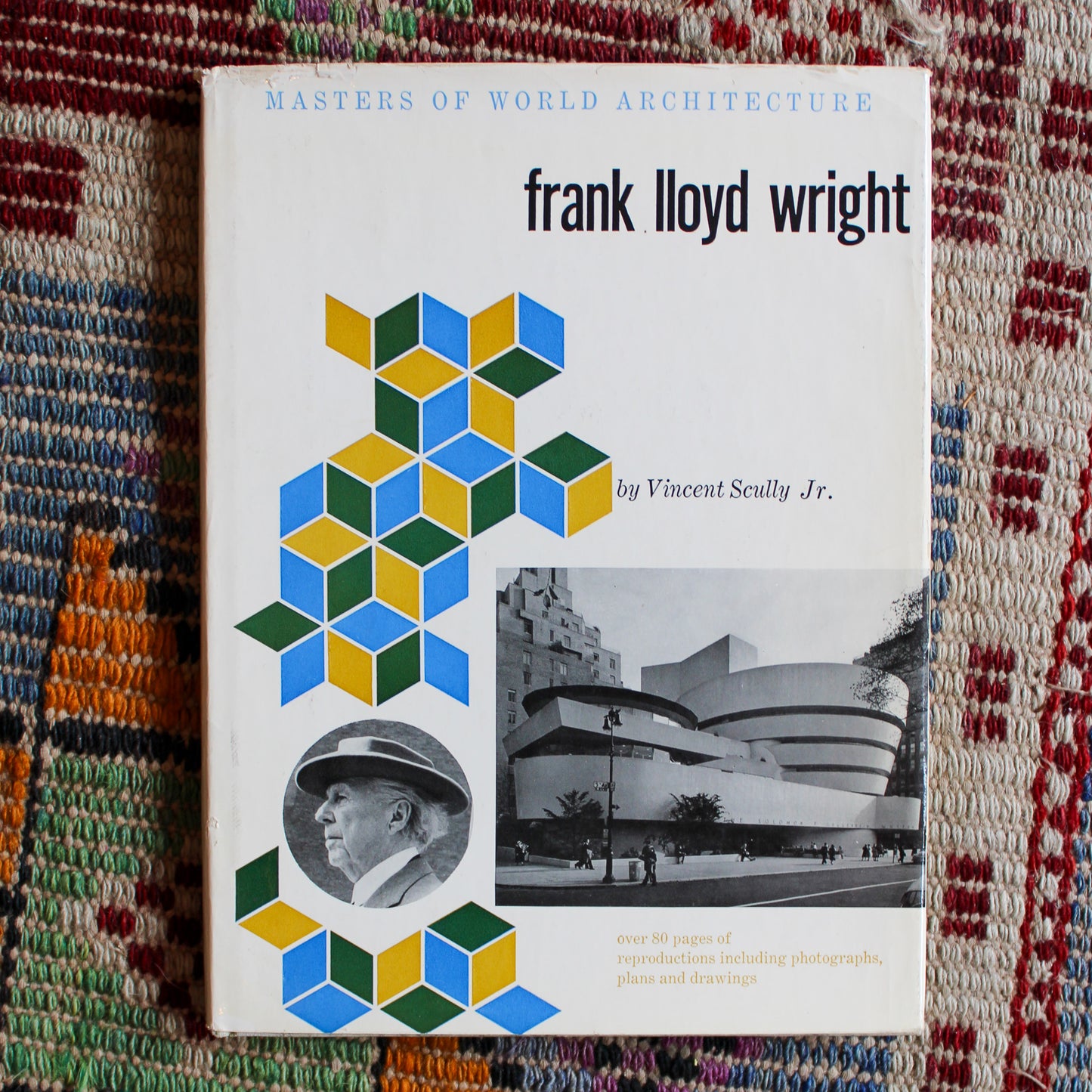Frank Lloyd Wright
Frank Lloyd Wright
details
details
Frank Lloyd Wright by Vincent Scully Jr.
In considering the basic elements in Frank Lloyd Wright's culture, the sources from which it grew and the images he sought to create, Vincent Scully presents a clear and sensitive thesis. Selecting the specific buildings which best demonstrate Wright's meaning, Mr. Scully ranges in depth, from Wright's first maturity-"the destruction of the box"-demonstrated in the Willetts House of 1902, to one of the last themes-the "dominant curves," —expressed in the Guggenheim Museum of 1959.
Wright's creative originality is possibly unique in the history of architecture. Yet he absorbed out of the past that which related to his own needs and desires. We are shown his use of Pre-Columbian and Japanese forms as well as those of Bronze-Age Crete. This, in complex combination with his indigenous American heritage of Jeffersonian ideals and his identification with the feelings expressed by Melville and Whitman, are carefully analyzed and illustrated. We are made to understand his abiding interest in space and structure, his "reverence for the landscape," and his love for natural materials. This leads inevitably to Wright's concept of organic architecture, so often misunderstood, but defined by Vincent Scully with the perception that characterizes this work throughout:
"He clearly believed that, when a building built by men to serve a specifically human purpose not only celebrated that purpose in its visible form but became an integrated structure as well, it then took on the character of an organism which existed according to its own complete and balanced laws.
In this way it dignified by its wholeness and integrity the purely human intellect and hand which created it. This is what Wright meant by 'organic.' Few architects have attempted so much and have been willing to ignore so little in order to achieve it."
VINCENT SCULLY's academic career is associated chiefly with Yale University from which he was graduated with an
M.A. in 1947 and a Ph.D. in 1949, and where he is now Associate Professor of the History of Art. Some of the results of his intense architectural scholarship include articles in various learned journals and architectural periodicals, and also the following books: The Architectural Heritage of Newport, Rhode Island (with Antoinette Downing), which won the Society of Architectural Historians prize for 1952; and The Shingle Style, which was awarded the College Art Association prize for 1955.
Soon to be published is the book he wrote in Greece, The Earth, The Tem-ple, and The Gods, on the genesis of form in the Greek temple.
Hardcover with dust jacket
Author: Vincent Scully Jr.
Edition/Year: 1990, George Braziller, Inc.
Condition: Good vintage condition
Dimensions: 10" x 7.5"
Share


